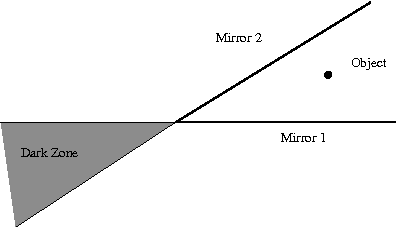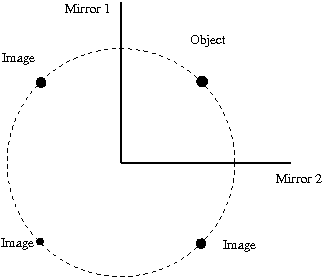Images formed by Two Plane Mirrors
The number of images formed by two plane mirrors forming an angle depends on the angle between them and whether the object is placed symmetrically between the mirrors. The image formed by one mirror acts as the object for the other, as long as the image lies in the object half of the plane for the other mirror. If the object is at the back of the mirror, no light from the object can fall on the mirror. All the images will be of the same intensity of the mirrors are infinite (semi-infinite), so that the amount of light that is seen to form an image is the same for all images. However, for finite mirrors, the amount of light is substantially lower for the images after the first couple of images, so that they would be fainter. The above statements assume that there is no loss in reflection.

Mirrors and Image forming space
If an object is placed between three mutually perpendicular mirrors, there are 7 images produced. Let the co-ordinates of the point be (a, b, c). The total images formed due to the mirrors in the xy, yz, and zx planes are all the different combinations of a, -a, for the first, b, -b for the second, and c, -c for the third respectively. This gives rise to 2 x 2 x 2 = 8 possibilities, where one of them coincides with the object (a, b, c).

Images by Perpendicular Mirrors